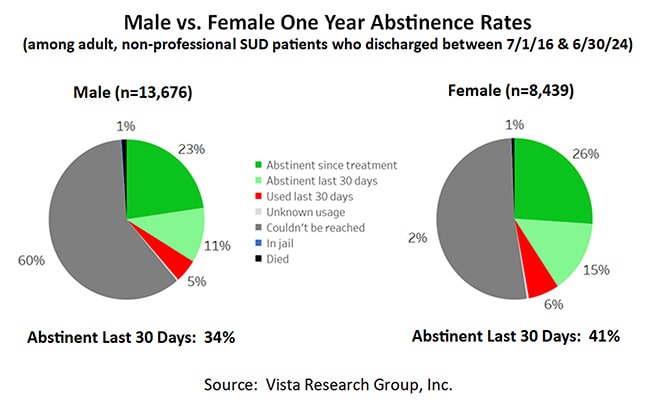
A cursory look at Vista Research Group’s data makes it appear that women are more likely to be able to stop using drugs and alcohol after treatment than men. Among 22,115 adult SUD patients Vista attempted to contact one year after they left addiction treatment, 41% of women reported being abstinent during the last 30 days compared to only 34% of men:

We have to dig further, however, to understand if this is real. Could it simply be that women are addicted to substances that are easier to recover from? For example, our research shows that alcohol addiction is substantially easier to recover from than addiction to most other drugs and 54% of women in the Vista Research Network entered treatment for alcohol use disorder compared to only 48% of men:
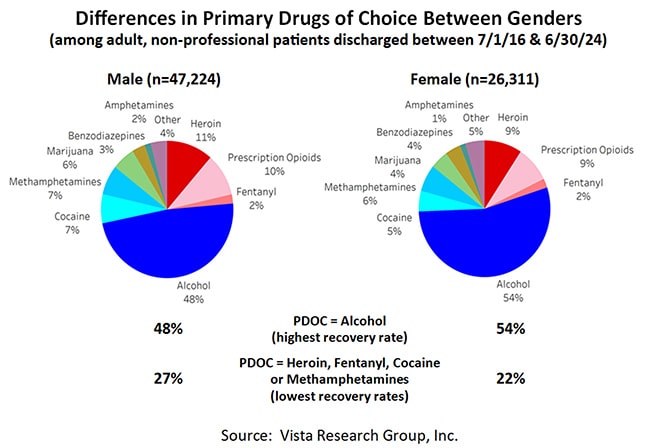
Additionally, substantially more men than women entering treatment claimed heroin, fentanyl, cocaine or meth as their primary drug of choice (27% versus 22%), and these substances have the worst recovery rates. To truly answer our question, we need to eliminate the impact of differing drugs of choice by limiting our investigation to just one.
Are Women More Likely to Recover From Alcohol Use Disorder Than Men?
Yes. Forty-three percent (43%) of the women entering treatment for alcohol use disorder were abstinent one year later compared to only 38% of the men:
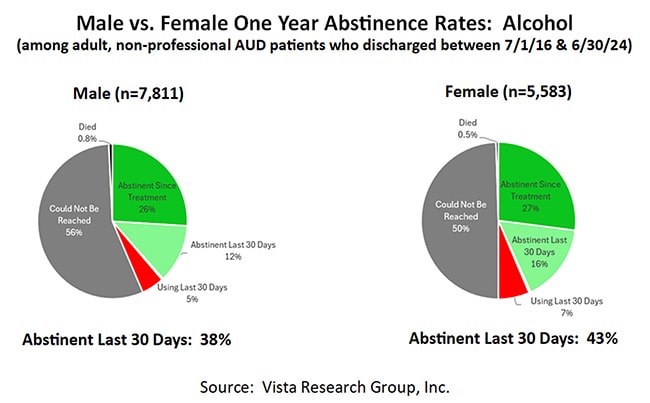
Interestingly, it turns out that the degree by which women in treatment for alcohol use disorder are more likely than men to be abstinent one year later depends upon age:
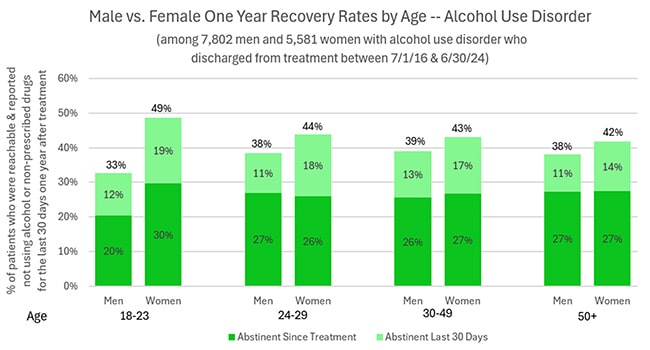
While women have higher one year abstinence rates than men across all the age groups, the biggest difference by far is among patients who are 18-23 years old.
This makes sense according to brain science. The frontal cortex governing both sensation-seeking behavior and future-oriented decision making typically develops earlier in females than in males. This means that in addition to having better impulse control, young women are also typically better able to engage with therapy than young men.
Another interesting finding in the above chart is that roughly 27% of all men and women who are 24 or older report not having used any alcohol or illicit drugs in the year since treatment. The reason women have higher abstinence rates across the board is that more of them were able to regain sobriety after they relapsed!
Could Women Simply Be More Likely to
Respond to Surveys?
Of course, we can’t rule out that women are simply more compliant about responding to Vista’s post-treatment surveys. While there may be an element of this, the fact that men entering treatment have typically been to treatment more times than women in the same age group indicates that men have more trouble recovering from addiction than women:
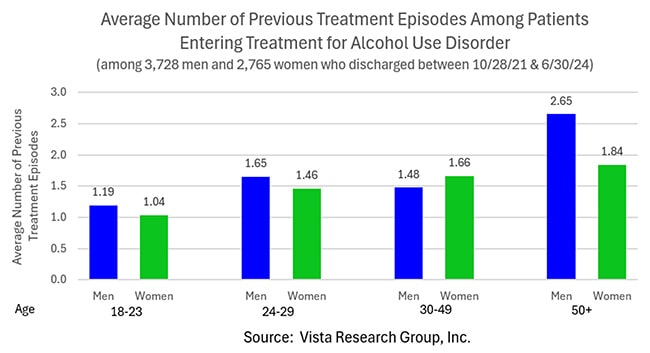
TL; DR
Women typically are more successful recovering from addiction than men, with the biggest difference occurring among young adults.






